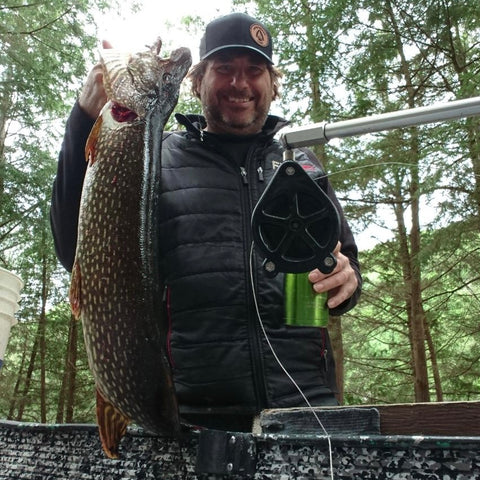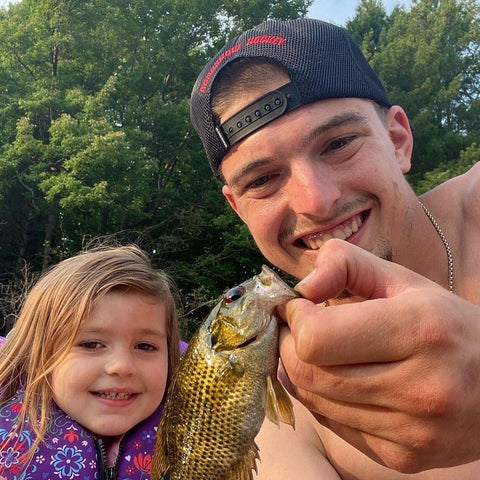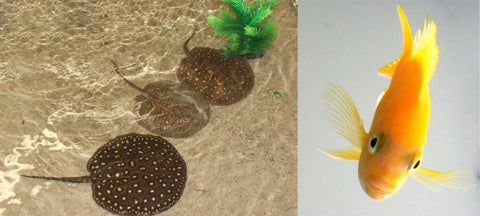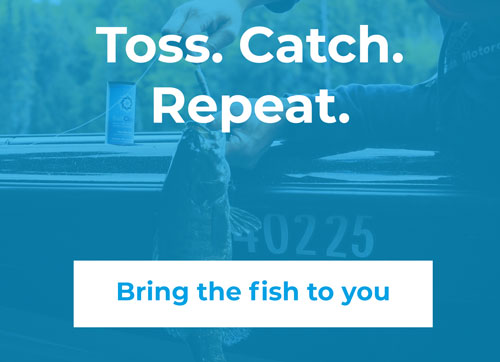The 7 Best Species To Target In The Summertime
In North America, we’re blessed with millions of acres of fishable water. From pristine mountain streams and massive reservoirs, to natural lakes beyond count – there’s almost certain to be a fishable body of water within 10 miles of where you are sitting reading this.
Because of the diversity of available waterways, anglers are blessed with the ability to choose (for the most part) which species we intend to target on any given fishing trip. Seasonal factors can add even more flavour to that choice, as certain species bite better during certain times of the year.
Don’t let all the options overwhelm you!
Here’s a guide to which species bite the best for summertime fishing, and how to catch them.
1. Largemouth Bass
One of the most common and sought-after species in the USA, largemouth bass are the most popular gamefish in the country, and can be found in just about every waterbody from San Diego to the Atlantic Coast. They put up a great fight, and are aggressive enough to keep you setting the hook throughout the day. Excellent summertime largemouth patterns include flipping and pitching to laydowns, cranking or swimming a jig down a grass line, or skipping docks with soft plastics.
2. Smallmouth Bass
Like their green cousins, smallmouth bass are also abundant across the majority of the country, and bite extremely well all summer long. They can be found in streams, rivers, and lakes – and they are one of the hardest fighting fish you can tackle in fresh water. Search for a summertime smallmouth bite by combing rocky shorelines, current seams, and offshore structure with crank baits , football jigs, and spinnerbaits. Smallmouth also destroy topwater baits, and seeing one explode on a walk-the-dog style plug is the highlight of many anglers summer season.
3. Crappie
If you’re looking for the perfect crossroads between abundance, willingness to bite, and taste on the table – look no further than crappie. These frisky fighters have a serious following among anglers across the country. Summertime crappies hang out around deep brush, sunken logs, and laydowns that have good (6-12 feet) depth to them. There are also several lakes nationwide that are top notch places to go crappie fishing for slabs. Good bets for summer crappie are small plastics like tubes and grubs fished on jig heads, tiny crankbaits, and live bait rigs with minnows.
4. Bluegill
Although overlooked by many anglers, more bluegills are caught each year than any other species of freshwater fish. They are super aggressive, can be caught on any presentation imaginable, and they are one of the finest eating fish you can catch. They can also be a “day saver” when you’re fishing for something else and it’s just not working. Don’t be afraid to pull out the ultralight and get your string stretched by these aggressive critters. Bluegills hang around almost any shallow cover they can find, including docks, laydowns, and grass beds.
5. Catfish
Despite their reputation as bottom feeders, catfish are and excellent species to target during the summer months. They are hard fighters, and often bite best during times when other species shut down, like cold fronts or after storms have muddied the water. Channel cats are also excellent on the table, an added bonus for those who like to eat fish. Look for catfish in deep holes on river systems, and relating to creek channels in reservoirs. Set up on them with bottom rigs baited with stink bait or chicken livers – and hold on.
6. White Bass
If you’re just looking to get your string stretched, there’s no species more willing than the white bass. Common across most of the country, white bass roam lakes and river systems in massive schools – looking to chase down anything resembling a baitfish. Once you locate one, it’s common to catch countless others as they whip into a feeding frenzy. The best choices for white bass are anything that looks like a minnow – and can be unhooked quickly so you can catch another one. Topwaters, spinners, and small crankbaits are deadly.
7. Northern Pike
In the upper Midwest and northeast, the northern pike is one of the top predators in many lakes and rivers. Shaped like barracuda, the pike is the perfect ambush predator – hiding in shallow cover waiting to dart out and inhale a passing prey fish. They remain extremely active all summer, and targeting them can be a blast as their aggression is unmatched. Pike are commonly found in shallow, weedy bays, along grass lines, and in backwaters out of current. Try minnow imitators like spinnerbaits, crankbaits, and even swim jigs to entice strikes from nearby pike – don’t lip them though, as they’ve got a mouthful of sharp teeth.
At BaitCloud, we have manufactured a unique fish attractant to attract all of these species. Our multi-sensory fishing attractants dissolve on contact with water, creating bubbles and releasing millions of scent molecules into the water column, triggering the feeding instinct of the targeted species. Drop. Wait. Fish!






